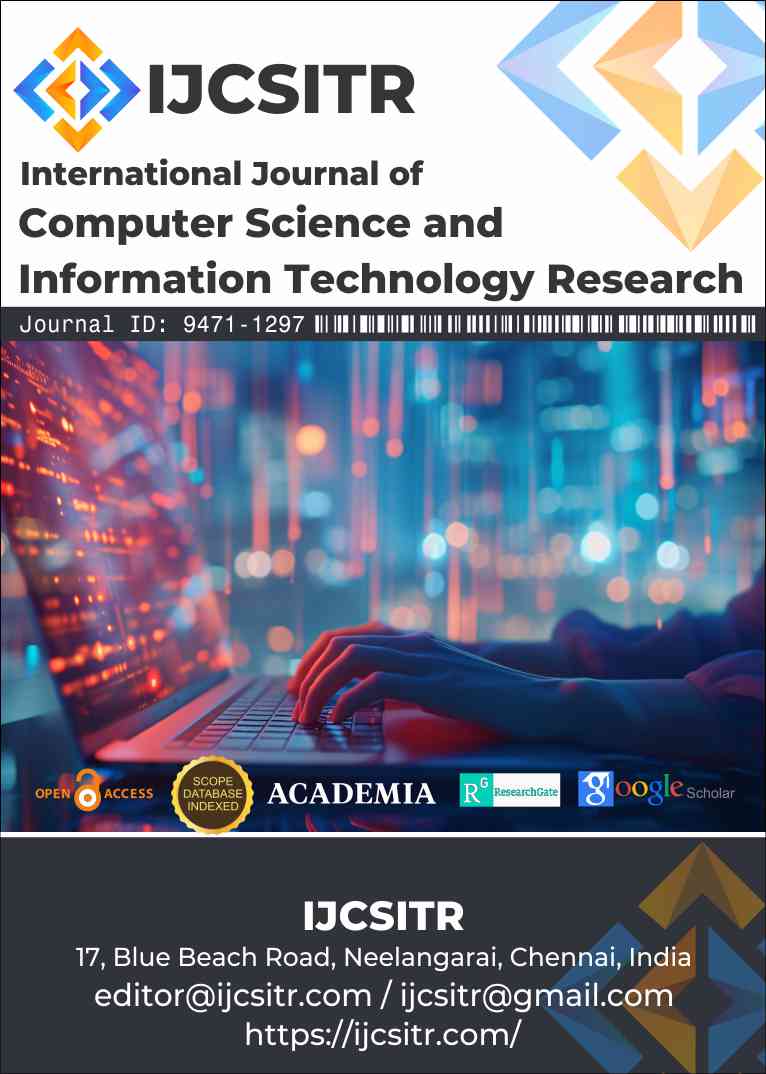Smart Automation for Client Service Agreement: Robotics in Action
DOI:
https://doi.org/10.5281/zenodo.14352695Keywords:
Client Service Agreement Automation, Robotic Process Automation (RPA), Artificial Intelligence (AI), Blockchain for Smart Contracts, Compliance MonitoringAbstract
Automation in client service agreements through robotics and artificial intelligence has revolutionized customer management and operational efficiency, enabling businesses to streamline processes, reduce costs, and minimize errors. By automating repetitive tasks such as contract drafting, compliance monitoring, performance tracking, and renewal management, organizations achieve faster turnaround times, improved accuracy, and enhanced scalability. This transformation reduces reliance on manual processes, freeing up resources for strategic decision-making and innovation. Additionally, automation fosters greater compliance with regulatory standards and ensures data security through technologies like blockchain. This article explores the multifaceted impact of robotics on client service agreement management, emphasizing its cost and time-saving benefits, the role of advanced technologies, the challenges of implementation, and the emerging trends that are set to redefine this space. As industries adopt these advanced solutions, automation is poised to become a cornerstone of efficient and reliable client service operations.
References
G. Pandy, V. Jayaram, M. S. Krishnappa, and B. S. Ingole, "Advancements in robotics process automation: A novel model with enhanced empirical validation and theoretical insights," arXiv preprint, arXiv:2410.04255, 2024.
D. G. V., C. S. M., S. S. Gujar, S. F. Shaikh, B. S. Ingole, and N. S. Reddy, "Scalable AI Solutions for IoT-Based Healthcare Systems Using Cloud Platforms," in 2024 8th International Conference on I-SMAC (IoT in Social, Mobile, Analytics and Cloud), Kirtipur, Nepal, 2024, pp. 156–162, doi: 10.1109/I-SMAC61858.2024.10714810.
B. S. Ingole, V. Ramineni, N. K. Pulipeta, M. J. Kathiriya, M. S. Krishnappa, and V. Jayaram, "The Dual Impact of Artificial Intelligence in Healthcare: Balancing Advancements with Ethical and Operational Challenges," European Journal of Computer Science and Information Technology, vol. 12, no. 6, pp. 35–45, 2024, doi: 10.37745/ejcsit.2013/vol12n63545.
E. Miller and F. Zhang, "Advancements in AI algorithms for healthcare automation," AI in Medi- cine Review, vol. 43, no. 3, pp. 195–210, 2023. doi: 10.1007/aimed.2023.02156.
M. Rodriguez and P. N. Lee, "User-centric design approaches for automated healthcare systems," Journal of User Experience in Healthcare, vol. 27, no. 4, pp. 138–150, 2023. doi: 10.1098/JUXH.2023.0201.
R. Wilson, "Validation and system testing in automated healthcare environments," Journal of Sys- tem Integration, vol. 55, no. 5, pp. 460–472, 2023. doi: 10.1007/systems.2023.01234.
G. Pandy, V. J. Pugazhenthi, and A. Murugan, "Advances in Software Testing in 2024: Experi- mental Insights, Frameworks, and Future Directions," International Journal of Advanced Research in Computer and Communication Engineering, vol. 13, no. 11, pp. 40–44, Nov. 2024, doi: 10.17148/IJARCCE.2024.131103.
M. Collier, S. Fu, and R. Yin, "The impact of automation on healthcare administration: enhancing operational efficiency," Journal of Healthcare Management, vol. 67, no. 2, pp. 120–132, 2022. doi: 10.1097/JHM-D-21-00123.
M. K. Pasupuleti, "Intelligent Automation: AI and Machine Learning Transforming Industry 5.0," in AI-Powered Innovations: Transforming Industries with Machine Learning and Automation, Na- tional Education Services, Nov. 2024. doi: 10.62311/nesx/66289.
C. A. DeGuzman and B. Donmez, "Training benefits driver behaviour while using automation with an attention monitoring system," Transp. Res. Part C Emerg. Technol., vol. 165, Art. no. 104752, 2024. doi: 10.1016/j.trc.2024.104752.
"User-interface design for highly automated systems: a structured approach," Proc. 2013 ACM SIGCHI Conf. Human Factors Comput. Syst., May 2013, pp. 1059–1068. doi: 10.1145/2494493.2494517.
G. Pandy, V. G. Pugazhenthi, and J. K. Chinnathambi, "Real Value of Automation in the Healthcare Industry," European Journal of Computer Science and Information Technology, vol. 12, no. 9, pp. 1–9, Sep. 2024.
T. K. Vashishth, V. Sharma, K. K. Sharma, and R. Panwar, "Enhancing Customer Experience through AI-Enabled Content Personalization in E-Commerce Marketing," in Advances in Digital Marketing in the Era of Artificial Intelligence, Apr. 2024, pp. [include specific page numbers if available]. doi: 10.1201/9781003450443-2.
N. Bangad, V. Jayaram, M. S. Krishnappa, A. R. Banarse, D. M. Bidkar, A. Nagpal, and V. Par- lapalli, "A Theoretical Framework for AI-Driven Data Quality Monitoring in High-Volume Data Environments," International Journal of Computer Engineering and Technology (IJCET), vol. 15, no. 5, pp. 618–636, Sep.–Oct. 2024, doi: 10.5281/zenodo.13878755.
T. Clark and J. Mendoza, "Data security in automated healthcare systems: addressing privacy concerns," Cybersecurity for Healthcare Journal, vol. 30, no. 1, pp. 70–82, 2024. doi: 10.1016/j.cybhealth.2024.01.005.
Downloads
Published
Issue
Section
License
Copyright (c) 2024 Gokul Pandy, Vigneshwaran Jagadeesan Pugazhenthi, Jinesh Kumar Chinnathambi, Aravindhan Murugan (Author)

This work is licensed under a Creative Commons Attribution-NonCommercial 4.0 International License.







